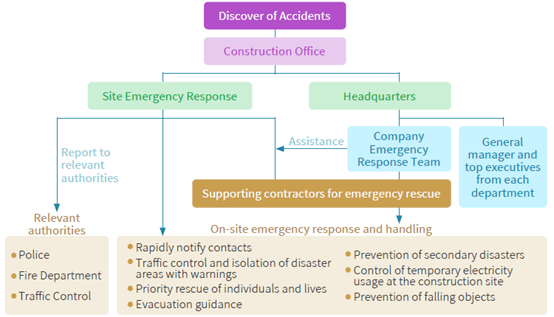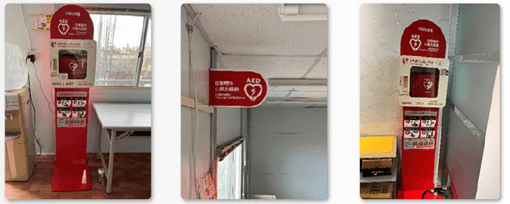Comprehensive Employee Benefits
- Performance-Based Rewards and Profit Sharing
- Performance bonuses linked to individual results
- Profit-sharing distributed in profitable years
- Special allowances for life events such as marriage, childbirth, birthdays, bereavement, and major holidays
- Employee Welfare Committee Initiatives
- Event-based allowances (marriage, childbirth, birthdays, bereavement, traditional holidays)
- Scholarships for employees’ children
- Travel and recreation subsidies
- Department gatherings and quarterly birthday celebrations
- Subsidies for employee clubs and activities
- Exclusive discounts through partner merchants
- Additional Subsidies
- Car purchase and fuel subsidies (for Assistant Manager level and above, once every 5 years; fuel subsidies for business use of personal vehicles)
- Housing rental subsidies for employees working at remote project sites
- Subsidized health checkups every two years
- Insurance Protection
- Comprehensive coverage through statutory labor and health insurance
- Additional group insurance policies for all employees
- Preferential Housing Program
- Special employee home purchase scheme available once every 5 years
- Flexible Work Hours
- Flexible clock-in: official start time at 8:30 a.m., with latest clock-in by 9:05 a.m.. Corresponding adjustment of end-of-day hours, allowing staff to better balance work and personal needs.
- Provides a lunch break from 12:30 to 1:40 p.m., exceeding the statutory labor requirement of a 30-minute rest period for every four hours worked.
- Recreational and Team-Building Activities
- Annual fitness and weight-management competitions to encourage healthy lifestyles
- Social events including team dinners, Lunar New Year banquets, year-end parties, and home-delivery celebration banquets to strengthen camaraderie
Compensation Policy and Performance-Based Rewards
To ensure fairness and reward performance, Delpha conducts structured performance evaluations across all roles and departments. These assessments—conducted regularly and as needed—form the basis for decisions related to promotion, salary adjustments, bonuses, and profit-sharing.
Regular Evaluations
- Trial Evaluation: evaluation will be conducted at the expiration of the three-month trial period, and the professional knowledge, performance, professionalism, and personal ethics of employees will be reviewed.
- Formal Assessment: The assessment is conducted at the middle and the end of each year. The mid-year assessment is an assessment for promotion and salary adjustment, and selects appropriate employees for promotion and talent cultivation; the yearend assessment is for the payment of year-end bonuses, to reward employees’ efforts and contributions for that year.
Irregular Evaluations
- Supervisor or employee transfer.
- Employees apply for leave without pay.
- The employee’s performance is abnormal and does not meet the target level.
Regular Evaluations
| Company | Evaluation Type | Employees Evaluated | Promotions Granted |
|---|---|---|---|
| Delpha Construction | Probation Review | 7 | - |
| Mid-Year Review | 38 | 21 | |
| Year-End Review | 36 | - | |
| Huajian Construction | Probation Review | 17 | - |
| Mid-Year Review | 51 | 10 | |
| Year-End Review | 51 | - | |
| Huachien Development | Probation Review | - | - |
| Mid-Year Review | - | - | |
| Year-End Review | - | - |
Ad-Hoc Evaluations
| Company | Evaluation Trigger | Employees Evaluated | Personnel Adjustments |
|---|---|---|---|
| Delpha Construction | Supervisor/Staff Reassignment | - | - |
| Unpaid Leave Request | - | - | |
| Performance Deviation | - | - | |
| Huajian Construction | Supervisor/Staff Reassignment | 1 | 1 |
| Unpaid Leave Request | - | - | |
| Performance Deviation | - | - | |
| Huachien Development | Supervisor/Staff Reassignment | - | - |
| Unpaid Leave Request | - | - | |
| Performance Deviation | - | - |
Integrating ESG Metrics into Executive Compensation
Beyond financial performance, ESG metrics are included in the annual performance review process and bonus allocation at all management levels. This ensures that sustainability goals are cascaded throughout the organization and operationalized across departments.
Key ESG performance indicators include:
- Operational performance
- Building quality and safety
- Risk management
- Corporate governance
- Business integrity
- Talent development
- Sustainable supply chain management
These priorities are closely aligned with Delpha’s material sustainability issues and stakeholder expectations.
Looking ahead, Delpha will continue to refine its compensation-linked ESG performance framework, aiming to strengthen internal alignment, motivate greater managerial involvement in ESG initiatives, and drive brand value and market competitiveness for long-term sustainable growth.
Retirement Planning and Implementation
Since July 2005, the Company has implemented Taiwan’s New Labor Pension System. For employees under this system, Delpha contributes 6% of monthly salaries to individual pension accounts managed by the Bureau of Labor Insurance. The Company also continues to allocate reserves for employees under the legacy system in accordance with legal requirements.
| Category | Legacy Scheme | New Scheme |
|---|---|---|
| Applicable Regulation | Governed by the Labor Standards Act | Governed by the Labor Pension Act |
| Funding Mechanism | The Company contributes 8% of each employee’s monthly salary into a designated pension reserve account with Bank of Taiwan | 6% monthly contribution for all employees |
| Contribution Amount | Pursuant to Article 3 of the Regulations for the Allocation and Management of Workers’ Retirement Reserves, the Company’s accumulated pension reserves have been confirmed as adequate to meet current retirement obligations. With the approval of the Taipei City Department of Labor, the Company has been granted a suspension of reserve contributions for the period from October 1, 2025, through September 30, 2026. | Contribution for 2024: NT$ 1,944 thousand |
As of the publication date of the 2025 Annual Report, approximately 11.8% of employees remain under the legacy pension plan.
Workplace Safety and Environmental Protection
Occupational Health and Safety (OHS)
In alignment with Taiwan’s Occupational Safety and Health Act and relevant regulations, Delpha adopts a structured, cross-functional approach to safety management. The Engineering Management Department oversees the implementation of safety initiatives and hosts monthly coordination meetings to promote safety awareness, share best practices, and reinforce a proactive safety culture across all project sites.
These efforts extend beyond internal teams to include contractors and neighboring communities, ensuring comprehensive protection for all stakeholders.
Our Safety Vision and Objectives
| Timeline | Strategic Objectives |
|---|---|
| 2025 (Short-Term) | • Achieve and sustain zero incidents, zero accidents, and zero occupational illnesses • Continue to implement safety training and awareness programs |
| 2027 (Mid-Term) | • Sustain zero-incident safety culture • Enhance and expand workforce training initiatives • Develop a comprehensive Occupational Health & Safety (OHS) Management Plan |
| 2030 (Long-Term) | • Institutionalize zero-incident practices • Fully integrate safety awareness into corporate culture • Establish a dedicated OHS Committee • Achieve ISO 45001 certification for Occupational Health and Safety Management |
OHS Policy Framework
- Compliance with Regulations:
- Full compliance with all applicable safety laws and regulations
- Mandatory safety helmet use and pre-entry training for all site personnel.
- Institutionalized Safety Management:
- Implementation of the Workplace Safety and Health Code, covering internal engineering controls, on-site autonomous management, and third-party contractor protocols.
- Training and Education:
- Annual safety training sessions, including fire drills, fall protection, emergency response, and construction site safety programs.
- Three-Zero Vision in Practice:
- Achieving zero hazards, zero accidents, and zero occupational illnesses through:
- Standard Operating Procedures (SOPs)
- Safety inspections and audits
- Periodic site patrols
- Performance-based safety tracking system
Key Safety Management Procedures
- Occupational Health and Safety Management Protocol
- Site Safety Audit Procedure
- Hazard Identification & Risk Assessment Planning
- Construction Site Inspection (Pre-, Mid-, Post-phase)
- Subcontractor Oversight and Management Protocol
- Subcontractor Procurement Guidelines
- Subcontractor Billing and Payment Process
- Construction Project Execution Manual
Occupational Safety Execution and Monitoring Framework
- On-Site Safety Coordination Committees:
- Each site maintains a Labor Safety and Health Coordination Committee, chaired by the site manager and comprising safety officers, engineering staff, and subcontractor supervisors. The committee conducts regular safety risk reviews and formulates preventive strategies tailored to site-specific conditions.
Organizational Roles and Safety Coordination Subcontractor Leads and Supervisors
Responsible for overseeing on-site operations and attending coordination meetings to reinforce safety compliance.
Project Engineers
Participate in safety meetings and assist in real-time safety monitoring and incident prevention.Designated Safety Officer (1 person)
Leads coordination meetings and provides professional OHS input and recommendations to site managers.Site Manager (1 person) Appointed as the head of safety coordination meetings and holds the authority to convene and facilitate safety discussions.
- Each site maintains a Labor Safety and Health Coordination Committee, chaired by the site manager and comprising safety officers, engineering staff, and subcontractor supervisors. The committee conducts regular safety risk reviews and formulates preventive strategies tailored to site-specific conditions.
- Pre-Entry Safety Control Measures:
- All personnel are required to complete registration and receive pre-entry occupational safety training.
- Subcontractors and partner vendors must attend certified OHS training sessions.
- Training content includes hazard identification, protective protocols, and emergency response procedures relevant to the site environment.
- Daily Access and Safety Briefings:
- Daily sign-ins are conducted, with clear communication of environmental hazards and safety regulations. Workers must sign a safety discipline agreement.
- Workers receive a "Construction Hazard Disclosure Form," detailing common risks (e.g., electrocution, falls, slips) and mitigation strategies, which must be acknowledged via signature.
- Safety Meetings and Communication Protocols:
- 08:00 Daily Safety Briefing: Conducted by the site supervisor to reinforce safety regulations, review PPE compliance, and update the safety bulletin board.
- 15:30 Trade Coordination Meeting: Supervisors review progress, coordinate resource allocation, and discuss task safety.
- 17:00 Internal Quality & Safety Review: Focused on internal evaluation of personnel, quality assurance, and safety performance, including issue escalation if needed.
- Routine Inspections and Safety Audits:
- Weekly inspections led by senior engineers and site supervisors focus on:
- Job site safety compliance
- Construction quality
- Route planning
- Material storage
- Site cleanliness
- Any findings are documented, corrective actions are tracked, and photo comparisons are maintained as part of final acceptance validation.
- Weekly inspections led by senior engineers and site supervisors focus on:
Emergency Response & Technical Safeguards
In 2024, all construction sites and office facilities were equipped with Automated External Defibrillators (AEDs) and first-aid equipment, significantly enhancing on-site emergency readiness.


Certified Occupational Safety Professionals
| Certification | Number of Certified Personnel |
|---|---|
| Licensed Construction Site Supervisors | 12 |
| Class A Certified Occupational Safety & Health Supervisors (Construction Sector) | 10 |
| Class B Certified Occupational Safety & Health Supervisors (Construction Sector) | 5 |
| Certified Occupational Safety & Health Managers | 3 |
| Certified Construction Safety Assessors | 4 |











